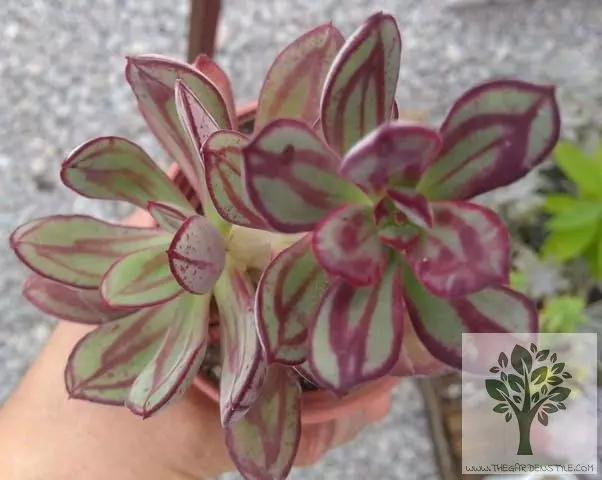Truly, just when we think we have already seen the most beautiful succulent, nature surprises us by showing us another of its beautiful creations. This is the case of the beautiful Echeveria nodulosa or commonly known as painted Echeveria.
This pretty Echeveria looks like it has been hand-painted and as soon as you meet it you will know why.
In this article, you will learn all the care required to keep it beautiful, healthy and beautify your garden.
Table of Contents
Characteristics of Echeveria nodulosa
Echeveria nodulosa is a succulent endemic to the Mexican Republic, particularly in the states of Oaxaca and Puebla, so if you live in Mexico, you will have no problem getting it.
It belongs to the Crassulaceae family.
This succulent develops vertical stems that branch and can reach a maximum height of 8” (20 cm).
Its leaves emerge from the stem in the form of a rosette, not very compact, have a slightly elongated shape, are slightly concave and their tone is an apple green or grayish-green with wine-colored or purple lines, which gives it the appearance of paint.
As it grows and develops it loses the leaves at the base of the stems, so if you see that no leaves develop there and the stem is “bare” it is normal.
The word nodulosa comes from the Latin “nodulus” which refers to the small knots that can be felt on the stems of our Echeveria nodulosa.
The best thing about this Echeveria is that it is easy to care for, so it is ideal if you are starting your collection or want to give a gift to someone who is just starting in the world of succulents.
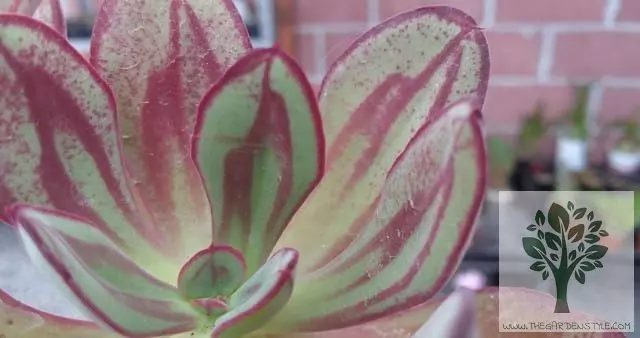
Echeveria nodulosa Care:
Follow these tips to properly care for your Echeveria nodulosa.
You may also be interested in our other articles about succulents: Zebra Succulent Plant Care and How to Care for Lithops.
Light:
The more sun it receives, the more intense its colors will be.
To our Echeveria nodulosa, it is necessary to try to place it in a place where it receives very good illumination and preferably, they arrive at him the rays of the direct sun of the mornings.
In this way we will achieve that it has an optimal development, just take care that it does not get the direct sun in the hottest hours because it can get burned and damaged.
If in the place where you live the temperature is very high you can place it under the shelter of a shade net, in this way we will avoid that it burns without depriving it of the direct sun.
Water:
Echeveria nodulosa is a succulent that needs standard watering, you can do this every time the substrate is completely dry.
The texture of its leaves is a bit chubby, so if you see that they are becoming puckered and wrinkled it will be a sign that it is lacking water and you need to adjust the frequency of watering.
Remember that Echeverias are succulents with roots very sensitive to excess moisture, so try not to overwater to avoid rotting and loss of your specimens.
When the autumn season arrives, watering should be reduced, and in winter, watering once a month will be enough.
Temperature:
Echeveria nodulosa is a seedling that will reach optimal development in warm environments with temperatures above 68°F (20°C).
It can withstand temperatures down to 32°F (0°C). and withstand a little frost as long as its substrate is dry.
So preferably if the temperature where you live drops below 41°F (5°C) it is preferable to keep it indoors to avoid complications.
Substrate:
For your painted echeverias to develop very well and not have rotting problems we must provide them with a substrate with excellent drainage and that has good aeration.
A curious fact about this echeveria is that it is slower growing than most of its companions and if we do not provide a suitable substrate this growth will be encouraged even more.
So, we must avoid that our substrate remains or tends to compact because it will not benefit our Echeveria nodulosa.
An excellent option that will perfectly cover the needs of our Echeveria nodulosa is this substrate (Order it here).
Fertilization:
If we want to fertilize our Echeveria nodulosa it is advisable to do it from May to September, doing it once a month will be enough.
We recommend this fertilizer that we use on our succulents and cacti (Order it here).
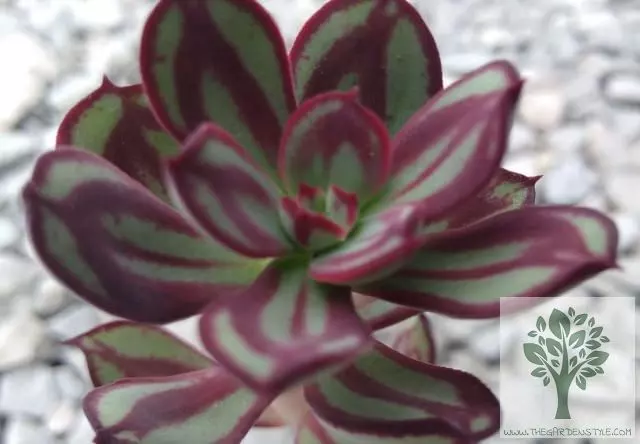
How to Propagate Echeveria nodulosa
It is very easy to propagate or reproduce our Echeveria nodulosa, this can be done by stem cuttings, by leaf, and by separation of offshoots.
To be more successful in propagating Echeveria nodulosa we recommend that you use a rooting hormone (Order it here).
Propagation of Echeveria nodulosa by Stem Cutting
1- To perform this type of propagation have at hand a good pair of pruning shears or a sharp knife previously disinfected with alcohol.
2- We take the branch that we want to cut and cut it, we can remove some leaves from the bottom to have a little more free stem for planting.
3- Let the cuttings dry in a semi-shaded and well-ventilated place.
4- Once the cutting has healed, we can plant it immediately in the substrate we have prepared.
5- Your cutting will not take long to develop its roots and become a new plant.
Propagation by Leaf:
1- Be sure to choose healthy leaves of your Echeveria nodulosa and separate them from your plant, making sure that the leaf is completely detached without leaving a piece attached to the stem.
2- Place your leaves in a tray with a moistened substrate in a semi-shaded place with good ventilation.
3- After a few days they will start to develop rosettes and roots until they become a new Echeveria nodulosa.
4- You should start spraying your leaves until you see that they have already developed roots, before that it is not necessary because the new seedling will take water from the mother leaf.
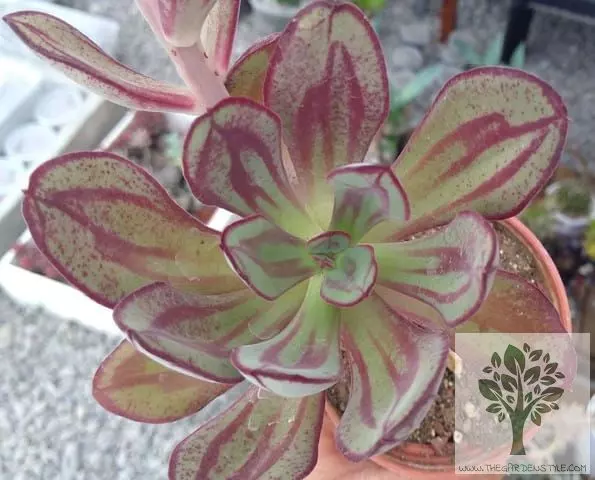
Flowering Echeveria nodulosa:
The flowers of Echeveria nodulosa arise from long flower stalks that develop from the sides of the rosettes.
These stems are up to 20” (50 cm) long and at the end of them, at the apex, we can see the flowers.
Its flowers are very beautiful, they are bell-shaped and have orange/red and yellow tones, it is a very beautiful flowering of this succulent.
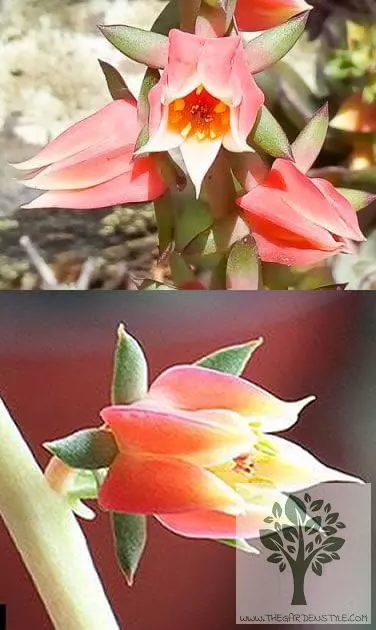
Common Problems with Echeveria nodulosa
The most frequently occurring pest on Echeveria nodulosa is the cottony mealybug, it can also be attacked by aphids.
But don’t worry, if you keep your Echeveria nodulosa in good condition, it will hardly fall prey to this or any other pest.
In the rainy season, remember to check it constantly, as they are usually a favorite of snails and slugs and can eat large sections of our nodulosa.
In the case of very small echeverias, snails can devour them almost completely.
Now you know the basic care you should take with the Echeveria nodulosa, so if you still do not have it, it is time to look for it and add it to your garden, in a short time it will become one of your favorites.
